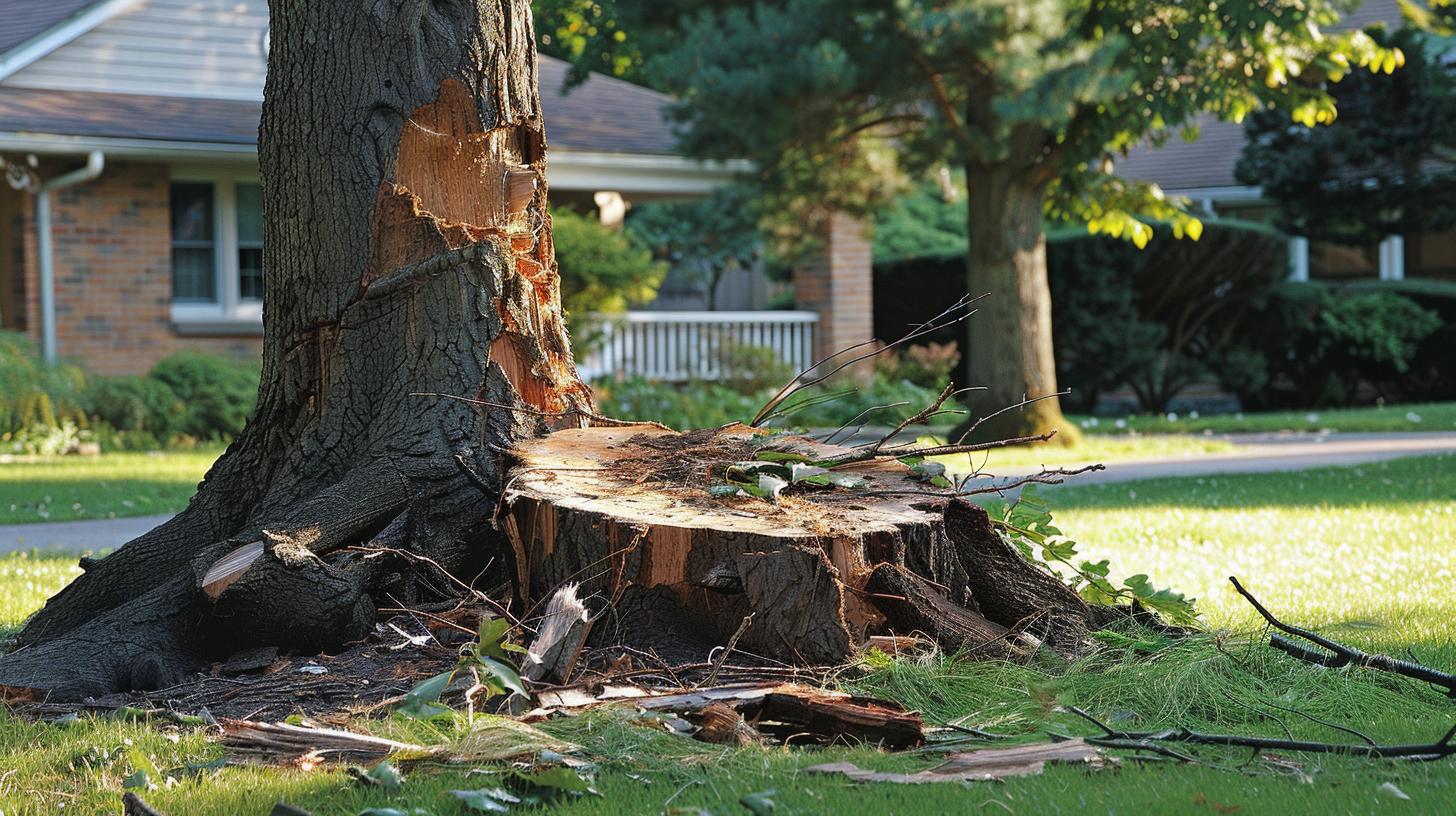Common Reasons Your Tree Is Not Growing Leaves in Spring
Impact of Late Blooming Species
Sometimes, trees are just fashionably late. Some species like Cape Myrtles and Black Walnuts take their sweet time to show off their leaves. They might look barren while your neighbor’s tree is already flaunting its foliage, but don’t panic yet! Check the type of tree you have—its natural timeline might be different.
Presence of Tree Diseases
Tree diseases can be sneaky culprits behind leafless branches. Fungal infections like anthracnose love crashing the spring party uninvited, leaving your maple or dogwood struggling to keep up appearances. If you notice black spots or wilting leaves (or lack thereof), it’s a sign that disease could be at play. Getting a preventive fungal spray from an expert can save your greenery.
Environmental Stress Factors
Mother Nature sometimes throws curveballs that stress out even the hardiest trees. Unseasonable cold snaps, extreme wind damage, or lightning strikes wreak havoc on root systems and trunks alike. A split trunk from harsh weather compromises water absorption which means no leafy crown for springtime photoshoots.
Examining Symptoms of Non-Leafing Trees
Is your tree looking a bit naked this spring? Before you start panicking, let’s jump into some common issues that might be the culprit.
Identifying Fungal Diseases
Fungi are sneaky little devils. One minute your tree’s fine, and the next it’s battling Verticillium wilt or anthracnose. Check for wilting leaves, discolored bark, and odd growths—these are telltale signs. Oaks and dogwoods often fall prey to these diseases in spring when fungi thrive. If you’re unsure, grab an expert; they can diagnose faster than you can say “mushroom.”
Signs of Physical Tree Damage
Sometimes trees take hits—from harsh weather to rogue lawnmowers. Look out for split trunks or broken branches. A nasty lightning strike could also zap life out of them without leaving obvious marks on the outside but causing havoc inside.

Symptoms Indicating Root Problems
Roots are like your tree’s lifeline; if they’re stressed or damaged, you’ve got trouble brewing underground! Overcrowding roots compete fiercely for nutrients which stunts leaf growth during critical blooming periods each year (especially springs). Roots disturbed by construction work won’t absorb water properly either resulting in weak branches barely holding onto any moisture – mulch helps big time here!
By spotting these symptoms early on using our handy guide above will save yourself from future headaches ensuring healthier greener seasons ahead.
Practical Steps to Encourage Leaf Growth
Proper Watering Techniques
You’d be amazed at what a little hydration can do for your tree. Make sure you’re not drowning it or leaving it parched. Aim to water deeply and infrequently, so the roots get their much-needed drink without turning into a soggy mess. Think of it as giving your tree a spa day rather than a quick shower.
Here’s how:
- Deep Soaks: Water thoroughly until the soil is moist about 6 inches deep.
- Timing Matters: Early mornings are perfect; less evaporation means more water reaches those thirsty roots.
- Check Moisture Levels: Stick your finger in the soil (or use a moisture meter). If it’s dry below two inches, time for another soak.
Fertilization and Soil Care
Just like you need that morning coffee kick, trees thrive with proper nutrition. Not all soils are created equal—some might need an extra boost of nutrients to support leaf growth.
Steps to enrich soil:
- Test Your Soil: Get a simple test kit from any garden store or send samples to local extension services.
- Right Nutrients: Choose fertilizers high in nitrogen because this helps leafy growth (look for N-P-K values).
- Organic Matter Magic: Mix compost into the top layer of soil; think banana peels and eggshells—trees love them too!
Pruning and Maintenance Best Practices
Think of pruning as giving your tree its best haircut ever—not just trimming but sculpting! Done right, pruning stimulates healthy growth by removing dead or overcrowded branches letting sunlight reach every part.
Prune like this:
- Timing Is Key: Late winter before new buds form is ideal unless dealing with disease then immediate action may be needed.
- Target Deadwood & Disease: Cut away anything dead diseased damaged first priority!
- Clean Cuts: Avoid tearing bark make clean cuts tools sanitized alcohol solution prevent spread pathogens between plants!
These steps ensure vibrant green canopy come springtime while keeping healthier happier now who doesn’t want that?
When to Seek Professional Help
Assessing When Expert Intervention Is Needed
Sometimes, figuring out why your tree isn’t sprouting leaves can feel like solving a mystery. If you’ve tried watering, fertilizing, and pruning but your tree is still looking bare, it might be time to call in the pros. Here are some telltale signs that you should seek expert help:
- Persistent Bare Branches: If spring has sprung but your branches haven’t budged an inch toward leafiness.
- Visible Damage: Look for cracks or splits in the trunk—Mother Nature can be ruthless.
- Foul Smells: A stinky branch could mean trouble; trees shouldn’t smell bad.
When these symptoms show up even though your best efforts, it’s probably time to get professional advice.
Benefits of Consulting an Arborist
Bringing in a certified arborist is like hiring Sherlock Holmes for your backyard. Here’s how they can save the day:
- Accurate Diagnosis:
- Experts pinpoint issues such as pests or fungal infections with precision.
- Proper Treatment Plans:
- They recommend treatments backed by science (and years of experience).
- Preventive Measures:
- An arborist knows how to set up long-term care plans so you’re not facing the same problem next year.
- Safe Pruning Techniques
- Avoid harmful DIY methods; professionals know where and how much to cut without causing further damage.
Conclusion
Understanding why your tree isn’t growing leaves in spring can save you time and stress. By recognizing the signs of late bloomers, diseases, or environmental stress factors, you’re already a step ahead. Don’t forget to carry out proper watering techniques fertilization tips and pruning practices for better leaf growth.
If persistent bare branches visible damage or foul smells are evident consulting an arborist becomes essential. A professional diagnosis ensures accurate treatment plans preventive measures and safe pruning methods that will support long-term health for your trees.
Taking proactive steps now means healthier more vibrant trees in future seasons bringing beauty and life back to your garden year after year.

